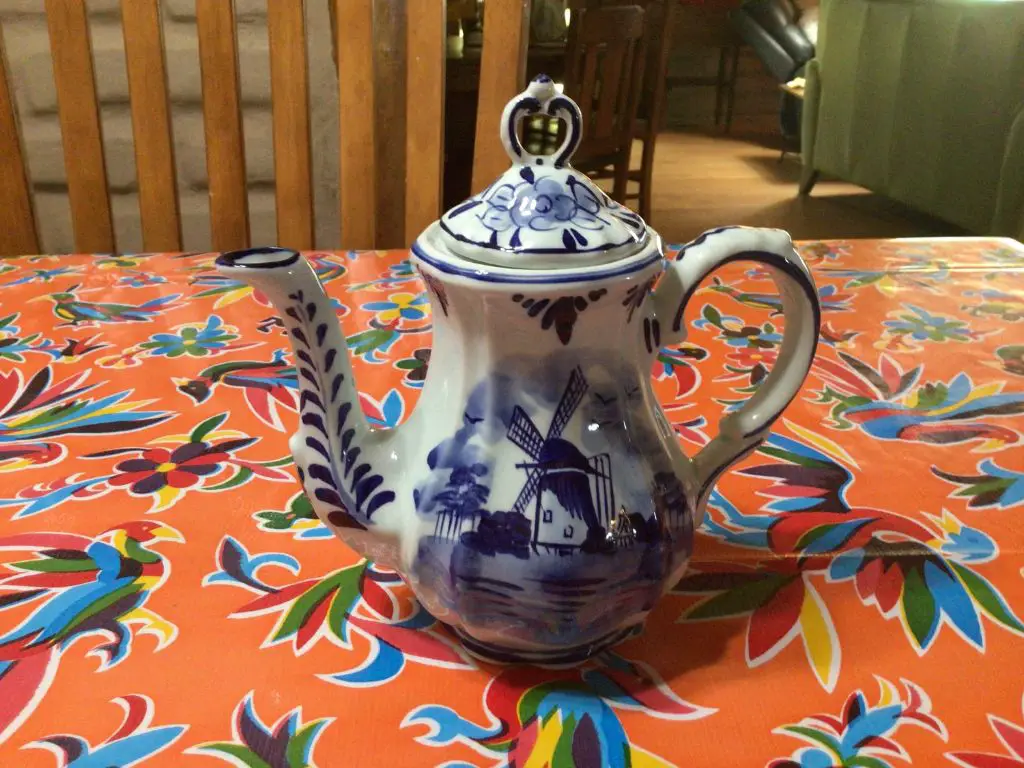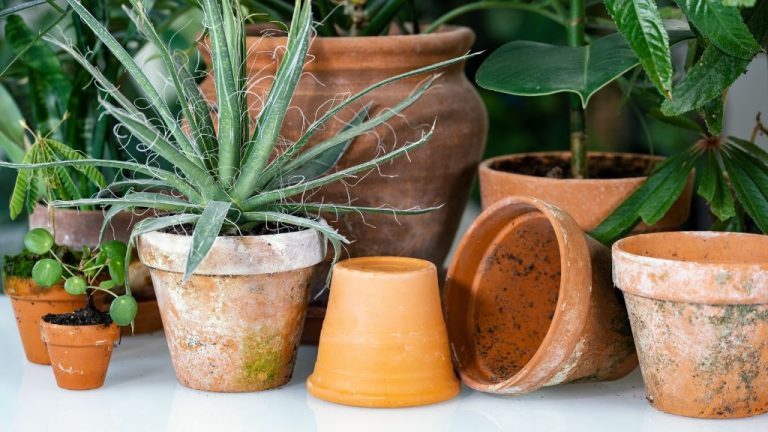Is Delft Blue Still Made?
Delft Blue refers to the famous blue and white pottery that originated in the city of Delft in the Netherlands in the 17th century. It became extremely popular and was exported around the world, especially to countries like England, France, Italy, and the Dutch East Indies. Delft Blue is known for its beautiful hand-painted designs and distinctive blue color inspired by Chinese porcelain.
At its peak in the 17th century, Delft had over 30 factories producing Delft Blue ceramics. It was an important part of the local economy and identity of Delft. However, demand declined in the 18th and 19th centuries due to competition from England and other countries. Delft Blue nearly vanished in the early 20th century with just one factory left by 1940. Thankfully, interest in this historic art was revived in the late 20th century and authentic Delft Blue is still being produced today. It remains highly prized by collectors and decorative arts enthusiasts around the world.
What is Delft Blue?
Delft Blue refers to the distinctive blue and white tin-glazed earthenware that originated in the city of Delft in the Netherlands in the 16th century. It is characterized by hand-painted blue and white decorative designs on an opaque white background.
The origins of Delft Blue can be traced back to 1602 when local Delft potters began imitating porcelain imported from China and Japan. They created an earthenware using a tin-based glaze which was then painted with decorative designs using a cobalt oxide-based blue pigment. The tin glaze allowed the potters to recreate the smooth, opaque white background of porcelain.
By the mid-1600s, Delft Blue had become extremely popular and the city of Delft was the major center of production of this iconic blue and white pottery. Delftware from Delft was exported across Europe and gained worldwide renown. It was highly prized for its beautiful designs and the illusion of looking like Chinese porcelain.
While Delft Blue originally imitated Chinese porcelain styles, by the 18th century it had developed its own unique designs, motifs, and aesthetic, frequently incorporating European artistic styles. Floral patterns, scenes of windmills and canal-side houses, biblical and mythological themes were common. Delft Blue remains an iconic example of Dutch craftsmanship and artistic heritage.
Decline in 20th Century
Delft Blue faced steep decline in the 20th century due to several factors. It faced increasing competition from pottery producers in England and Asia. As described on The Pottery Wheel, prices for Chinese and Japanese porcelain were falling during the 18th century, undercutting Delft potters. Production was also disrupted by damage during World War II. Many historic Delft factories and kilns were destroyed in the German bombing of Rotterdam in 1940, as noted in the Wikipedia article on Delftware. The costs of production were also rising, making it more difficult for Delft manufacturers to compete with foreign imports. Labor was expensive and new environmental regulations required changes to traditional production methods, driving up expenses, according to this Medium article. By the late 20th century, only a handful of Delft producers remained.
Revival
Delft Blue experienced a revival starting in the 1980s thanks to government funding and new artistic innovations. The Dutch government began initiatives in the 1980s to preserve and promote Delft Blue as an important part of the country’s cultural heritage. Funding was provided to art schools and master painters to pass on their skills and kickstart production again.
A new generation of artists emerged who were inspired by Delft Blue but brought their own modern twist. They experimented with new styles, shapes, subjects, and production methods, breathing new life into the old Delft Blue aesthetic. Some innovators hand-painted designs over white glaze rather than traditional blue glaze for a unique look.
The revival of Delft Blue has also been fueled by tourism. Delft and other towns where it is produced have become tourist attractions, drawing visitors who want to see the iconic blue and white pottery being made. Souvenir shops catering to tourists drive demand for affordable mass-produced items.

Where is Delft Blue still produced?
Delft Blue is still produced at a few factories in the city of Delft in the Netherlands. The three main producers that keep the tradition alive today are:
De Delftse Pauw – Founded in 1982, this small factory produces authentic Delft Blue pottery using traditional methods. Their pieces are hand-painted and they offer factory tours to allow visitors to see the production process first-hand (Wikipedia).
De Candelaer – Operating since 1978, this workshop focuses on producing ceramic objects based on antique examples. Their artisans hand-paint each piece following centuries-old techniques (Is Delftware still made?).
De Porceleyne Fles (Royal Delft) – Founded in 1653, Royal Delft is the last remaining earthenware factory from the 17th century still making authentic Delft Blue. Visitors can take factory tours and experience the intricate production process (Discover Delft Blue in Delft).
Modern Delft Blue
While honoring centuries of tradition, Delft Blue pottery today also embraces innovation and modern tools. Many Delftware factories use technology like digital transfers to quickly outline intricate designs before hand-painting. This allows for very precise and detailed artwork. Some factories, like Royal Delft, have systems that allow painters to quickly mix any of 250,000 shades of blue.
Modern techniques give Delftware artists more options when creating new designs. Computer software can lay out complex patterns not easily plotted by hand. And new materials like earthenware clay allow more experimentation in shapes and structures. So we see Delft vases, lamps, and objets d’art produced today that blend classic motifs like windmills with contemporary minimalist forms.
Despite adopting modern tools, the best Delftware is still hand-painted by master artisans. Human skill, patience, and an artistic eye remain essential to the Delft Blue tradition. While techniques advance, the heart and soul of Delft pottery endures. As one Delftware maker says, “We stand with one leg in the past, and one in the present” (https://www.ebay.com/itm/285533516193?chn=ps&mkevt=1&mkcid=28).
Delft Blue around the world
Delft Blue pottery has been popular far beyond the Netherlands for centuries, particularly in Asia and the Middle East. There has been a high demand for Delft Blue designs in countries like China and Japan as early as the 1600s. In the 18th century, Dutch merchants shipped large quantities of their iconic blue and white pottery to customers in East Asia.
Persian artisans began imitating Dutch Delft Blue almost as soon as pieces first arrived there in the 17th century. By the 19th century, Iranian craftsmen were producing very high quality Delft-inspired pottery and tilework. Today in countries across Asia and the Middle East, you can still see classic Delft Blue patterns on all kinds of decorative items for the home.
In places like Singapore, Malaysia, Thailand, and the Philippines, Delft Blue coffee mugs, vases, plates, and more remain very popular home decor purchases. Their distinctive look never seems to go out of style. Many luxury hotels and restaurants will use Delft Blue designs to add a touch of Dutch flair. According to one source, “The distinctive blue designs are used in home decor the world over.”[1]
Prices and availability
Delft Blue pottery and tiles are available at a wide range of price points today, from inexpensive souvenirs to high-end collectible items. At the lower end, you can find small ceramic trinkets, magnets, and decorative plates for under $10 USD. Moderately-priced vases, mugs, and decorative tiles typically range from $20-60 USD. For more specialized items like one-of-a-kind platters or antique pieces, expect to pay several hundred dollars or more.
The best place to view and purchase Delft Blue is in Delft itself. There are dozens of retail shops in the city center that carry an extensive selection. Royal Delft, the last remaining earthenware factory, has a gift shop at its museum and factory location. Many online retailers also sell Delft Blue pottery and ship worldwide. When buying antiques or highly collectible items, it’s best to view them in person first to examine the quality and authenticity.
Whether you’re a casual shopper looking for a unique Dutch souvenir or a serious collector seeking museum-worthy pieces, Delft Blue can be found at nearly every price point if you know where to look.
Preserving the legacy
Keeping the centuries old tradition and knowledge of Delft Blue pottery alive has become a key focus. Old Dutch masters have passed down their skills and techniques through many generations, and there are now concerted efforts to train new apprentices.
The Royal Delft Factory has an extensive training program taking 3-4 years for new decorators to learn the intricacies of Delft Blue painting and glazing before becoming certified. They aim to blend innovation with preservation of traditional handcraft techniques.
There are also initiatives to promote Delft Blue more broadly as an iconic Dutch cultural export and national symbol. The government agency Holland.com highlights Delft Blue in its marketing of quintessential Dutch offerings for tourists and visitors. This raises the profile and introduces new generations worldwide to the allure of Delft Blue.
Conclusion
The tradition of Delft Blue in the Netherlands has had it’s ups and downs over the years, but it is still made in Holland today and remains a recognizable symbol of Dutch culture.
Delft Blue peaked in popularity in the 17th century during the Dutch Golden Age and for years was the most highly sought after tin-glazed pottery in Europe. It experienced a steep decline in the early 20th century as interest waned. Production nearly ceased entirely during World War II. However, Delft Blue made a comeback in the second half of the 20th century as people began to appreciate it again for its artistic merit and cultural significance.
Authentic Delft Blue is still crafted by hand today in the city of Delft using traditional techniques. It is exported worldwide and collected by connoisseurs. While no longer the dominant pottery style it once was centuries ago, Delft Blue endures as an iconic Dutch tradition and remains an important part of the country’s cultural heritage.



